Stellaris recently underwent some huge mechanical changes, and even if you haven’t bought the new MegaCorp DLC, they are going to completely alter the way you play vanilla.
Whether you’re just coming back to Stellaris after a long hiatus, you’re a new player, or you’ve just purchased MegaCorp and want to be prepared for what’s to come, there’s a ton of stuff to go over.
From new civics and new planetary development types to new forms of diplomacy and non-military conquest, getting to the real meat of this DLC takes getting to the late-game. Just loading it up and starting a new game won’t do it justice.
If you’re going to invest that kind of time, you’d better be prepared to make the most of that new stuff when it becomes relevant in the game, right? Luckily, we’ve got you covered. Here’s your guide to everything that’s new in the latest release of Paradox’s space oddity.
Free Patch Features
First and foremost, Unity Ambitions are no longer locked behind the Utopia DLC. They’re free for all.
If you own Utopia, that’s not going to be a big deal; it’s the same mechanic you know and love. But for those of you who are new to the system, the gist is this: you can generate Unity through certain jobs for your pops, and those points can either be spent on diplomatic matters or a series of perks that improve certain elements of your faction.
Next, Democratic civilizations get all kinds of new Mandates and other perks that further offset the disadvantages of resource expenditure, as well as its leader-ousting effects. Again, that stuff’s all beautifully explained by the game’s extremely thorough tooltips.
But the real meat of the free patch? It’s the new Planetary System.
Gone are the days of tile-based jobs. Now, tiles have Districts, which are further divided into:
- City Districts (housing and clerk jobs)
- Generator Districts (energy credits)
- Mining Districts (minerals)
- Agricultural Districts (food)
This also makes it much more important to choose wisely when considering planets and colonies. The size of the planets, which previously determined how many tiles the planets would contain, now determines the maximum number of available districts.
You have a guns-or-butter choice here. You could convert every available district to city tiles, usable for housing or amenities to keep your pops happy, for example. The only limit on how many city districts you can have is the size of the planet itself. Just remember that every city district you build is one less district you can use to mine resources.
The other three districts all have caps, represented by little squares in the planet view. Not all planets are equally resource-rich, so you’ll want to plan strategically around that.
Meanwhile, there are buildings that can be built, as they were before, that affect overall planetary production.
Instead of these tiles being worked directly like they used to, you now get one building per 5 pops, and your maximum population is governed by food production and the number of city districts you build to provide housing.
It leads to a lot more specialization, especially since there are more resources; producing alloys from minerals, trade value for use with the game’s new economic systems, and Unity for those Ascension perks described earlier is a matter of building the right advanced buildings.
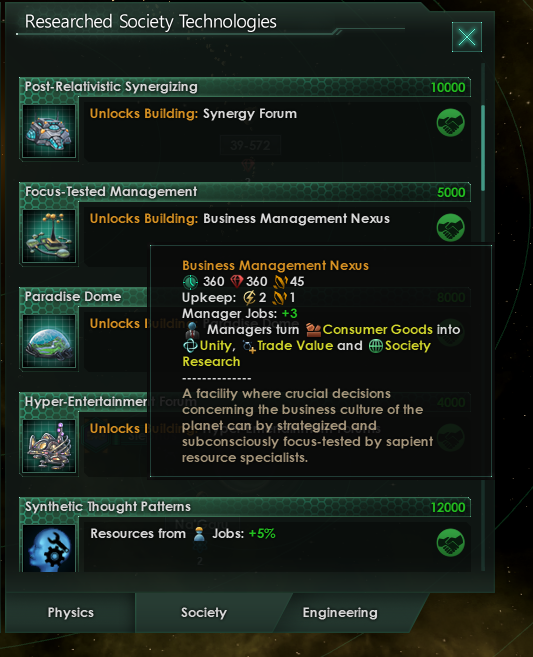
And on top of all of the above, it’s now easier for “tall” empires to make up for the lack of territorial expanse, which was previously necessary for mining rare resources by producing those rare materials planetside.
Speaking of Trade Value, not only is there the trade value that your planets produce, but there’s also now Trade Value produced the same way other resources have been in remote star systems.
To exploit that resource, however, takes a lot more work. You’ll have to build and upgrade Starbases to get at that trade potential, and you’ll then have to establish trade routes back to your capital.
And the further away from the capital the resources are, the more you’ll have to devote your fleets to protecting those trade routes, because otherwise you’ll fall victim to piracy (don’t worry, the game will tell you, to the last energy credit, how much you’re losing to piracy and how much fleet cap you’ll have to put out to stop all of it.)
When that happens, everything that the pirates get is lost to your empire.
Piracy suppression isn’t just a matter of spaceship deployment; starbases can be packed to the gills with gun batteries that have not just an anti-piracy suppression value but also come in handy when more organized enemies show up. Fight defensively with a well-upgraded starbase present and it will be suicide for the enemy to try and crack that strongpoint.
This adds a strategic dimension, especially if you’re playing with Hyperlane FTL rules; you now have easily defensible border chokepoints.
There’s a new policy, known simply as “Trade Policy”, now available under the usual empire policies tab that will determine what that trade value is used for. You can use it for “Wealth Creation” (a 1:1 conversion of trade value to energy credits), “Consumer Benefits” (0.5 EC and 0.25 consumer goods per unit of TV) or “Marketplace of Ideas” (0.5 EC, 0.15 points of Unity per unit of TV.) As always, the tooltip is there to remind you what you’re getting.
Taken together, not only is this a whole new way to play the base-game, but for those who can make the best use of the available new resources, it’s a massively profitable one, something that, if you’ve got Utopia, will come in real handy when it’s time to build those late-game Megastructures.
MegaCorp Features
Branches and Subsidiaries
Let’s start with the DLC’s namesake, the Megacorporations that are a whole new empire type in the game.
Unlike Machine Empires and Hive Minds, Megacorps allow you to use any combination of basegame societal ethics. And choosing between Materialist and Spiritualist now gives you two completely different ways to play the DLC; each comes with its own pros and cons on top of the previous dichotomy between science and happiness.
This is all made available by the new Corporate form of authority, which is a special form of government similar to the machine and hive forms from the other two DLC for the game.
When you take that, you get a whole new set of civics to choose from, and your planetary ruling class now produces trade value in addition to their other effects.
The biggest advantage that Megacorps offer is a higher administrative cap. “Tall” empires can now develop those highly populated planets to their fullest.
The trade-off is that the penalty for going over the cap is now huge. This is not a playstyle for “wide” empires. But don’t fret; there’s still a way to expand. This time, it’s by building Branch Offices on friendly planets with whom you’re able to conclude a Commercial Pact.
Once you’ve got the pact, the branch office provides energy credits both to you and to the target faction. And when the branch office gets powerful enough, you can turn it into a full Subsidiary, which is vassalage by another name.
The difference is that the “vassal” still retains its sovereignty; it can grow and expand and wage wars and otherwise behave as an independent nation. The hitch is that you get a one-way Defensive Pact; they have to support you in your wars. And they have to pay 25% of their energy credits as “tribute”.
All told, it’s very profitable and mutually beneficial.
Criminal Syndicates
But maybe you don’t want a mutually beneficial relationship. Maybe you want to be the Space Mafia, exploiting your victim rather than playing nice.
For you, there’s the Criminal Heritage civic.
When you take that trait, you get a permanent, irrevocable change to your diplomatic relations with other factions. Nobody will enter into a Commercial Pact with you.
On the other hand, though, you don’t have to ask permission to build a Branch Office. You can put one down wherever you like, whether the owning faction of the planet likes it or not. These branch offices grow stronger the higher the crime rate is on the target planet. As the Space Mafia, you have a vested interest in keeping things unstable and lawless.
But when some other faction tries the same thing on you, this gives you your counter-strike. Put simply, the more resources you spend on law enforcement, the more you strangle the enemy’s income, turning their would-be takeover of your space into a lot of jailed aliens. No crime, no profit. So if you see a Criminal Heritage empire anywhere near your borders, make plans to stay on top of that crime rate.
Gospel of the Masses
With “Gospel of the Masses”, you get a MegaChurch instead of a MegaCorp. The bulk of your income now comes from tithing, and while you can still trade, your Branch Offices now become Temples of Prosperity, spreading religion.
A lot of it is “same game, different name” and it plays fundamentally the same.
Keep in mind, you can combine Gospel of the Masses and Criminal Heritage, so they’re not mutually exclusive!
Coruscant Simulator
Next, there’s the Ecumenopolis, which is a “city planet”. Think Coruscant from Star Wars.
Before we get into the details of how to use them, here’s how to build one:
Step 1: Unlock the Arcology Ascension Perk. This is a big reason why they unhooked Ascension Perks and the Unity system from Utopia; MegaCorp wouldn’t work without it.
Step 2: Replace every resource district on the planet with City Districts.
Step 3: Go to the planet’s Decisions menu. Once the first two requirements are met, you’ll get a Decision to construct the Arcology Project.
Once this is done, you get the Residential Arcology, Foundry Arcology, Industrial Arcology, and Leisure Arcology, which make use of all those pops to produce even more resources than you’d get on a regular resource-rich planet.
On top of this, you get new Megastructures to even further enhance your late-game experience.
The Matter Decompressor is basically like a Dyson Sphere but extracts a ton of minerals rather than harnessing a star to make energy.
Mega Art Installations produce Unity and Amenities, which means lower crime rate, faster gaining of the rest of the Ascension Perks, and less planetary buildings devoted to keeping the peace, so instead you can generate economic value with their slots.
Strategic Command Centers let your corporation have sharper teeth; building one raises your fleet cap dramatically, adds to the number of starbases you can build, beefs up the defensive weaponry you can use to protect your trade routes and territory in general, and improves the sublight speed of your warships.
Finally, Interstellar Assemblies massively increase immigration pull and turn all but the meanest AI factions into friends with huge diplomatic relation bonuses.
Miscellaneous New Stuff
There are two other additions to MegaCorp: the Caravaneers and the Slave Market.
The Caravaneers are random wanderers who come floating through your empire, and they offer deals on goods you can’t find anywhere else. They also bring with them a slot machine game. They deal in “Caravan Coinz”, which are a special currency that you buy with your hard-earned energy credits. They’re used for that slot machine game where you try and win more “Coinz”, which you can use to buy loot boxes.
And finally, there’s the Slave Market.
This does exactly what you expect it to. Anti-slavery empires can buy slaves’ freedom (and deny other empires the chance to own the resources the slaves provide.) Pro-slavery empires can buy what essentially amount to pops that are either better or worse laborers than your native pops, but you don’t have to wait for natural growth, just plug the slave into the job slot.
Of course, which of those you do depends entirely on what kind of empire you are.
All told, there is a massive amount of content to be enjoyed here, and now you have the complete overview. Happy trading!


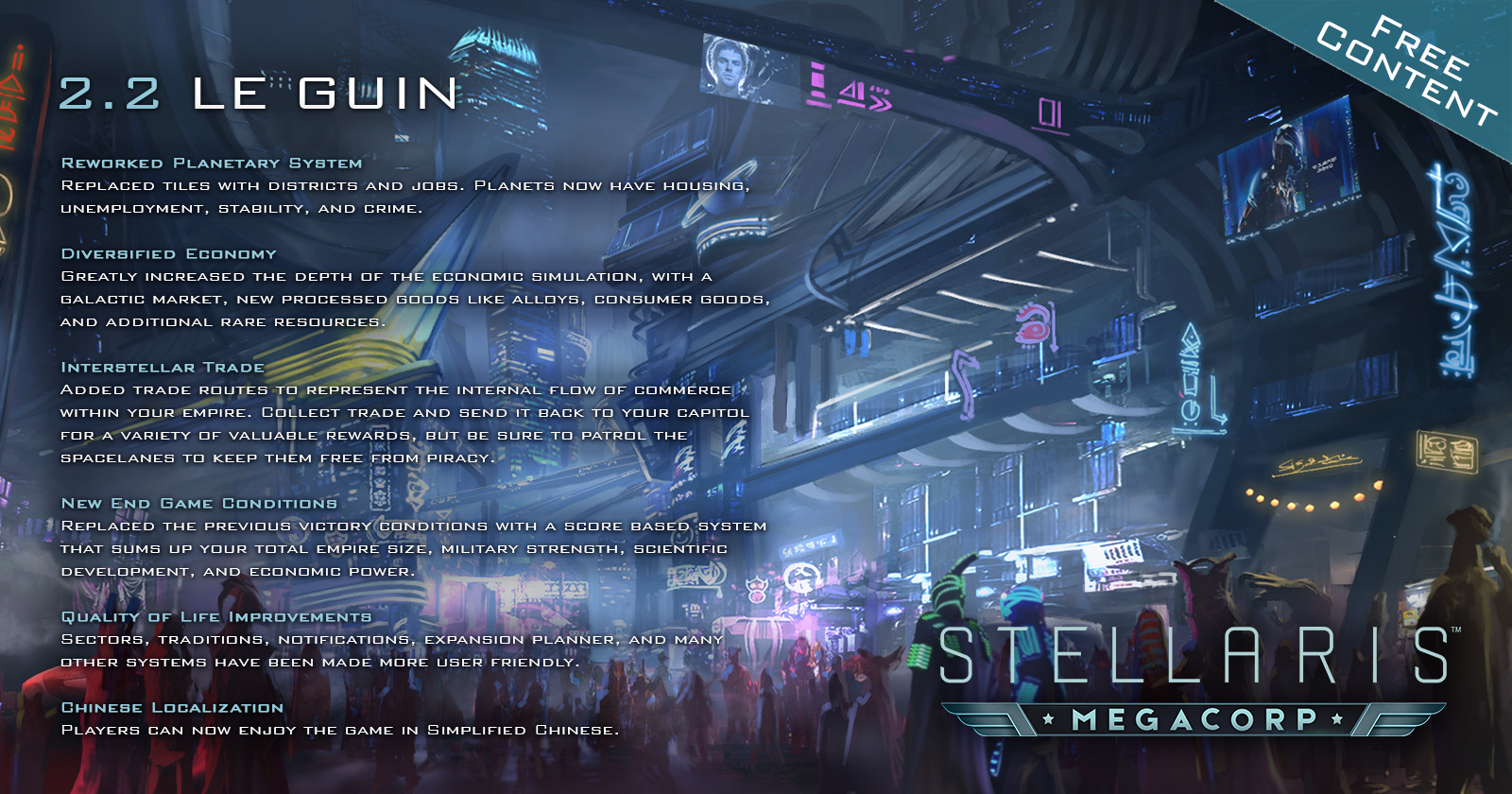
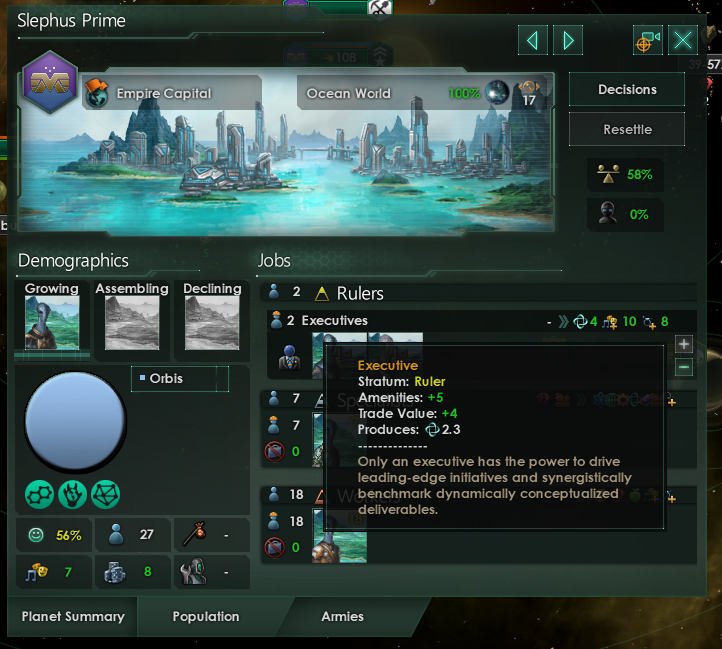
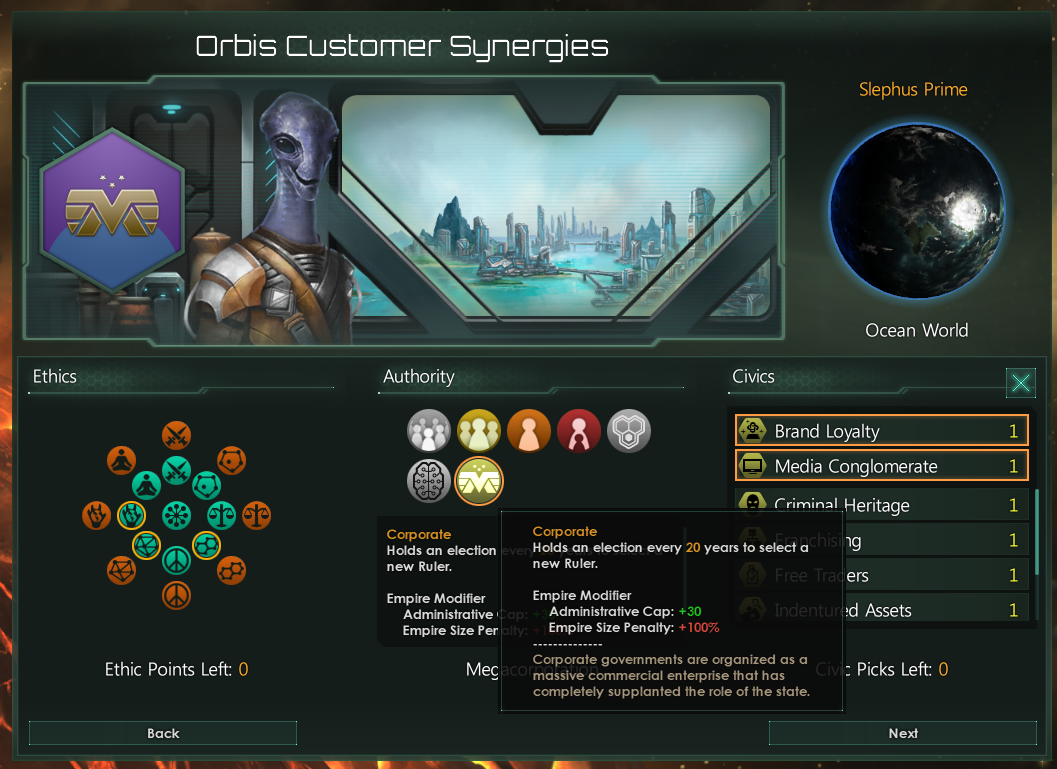
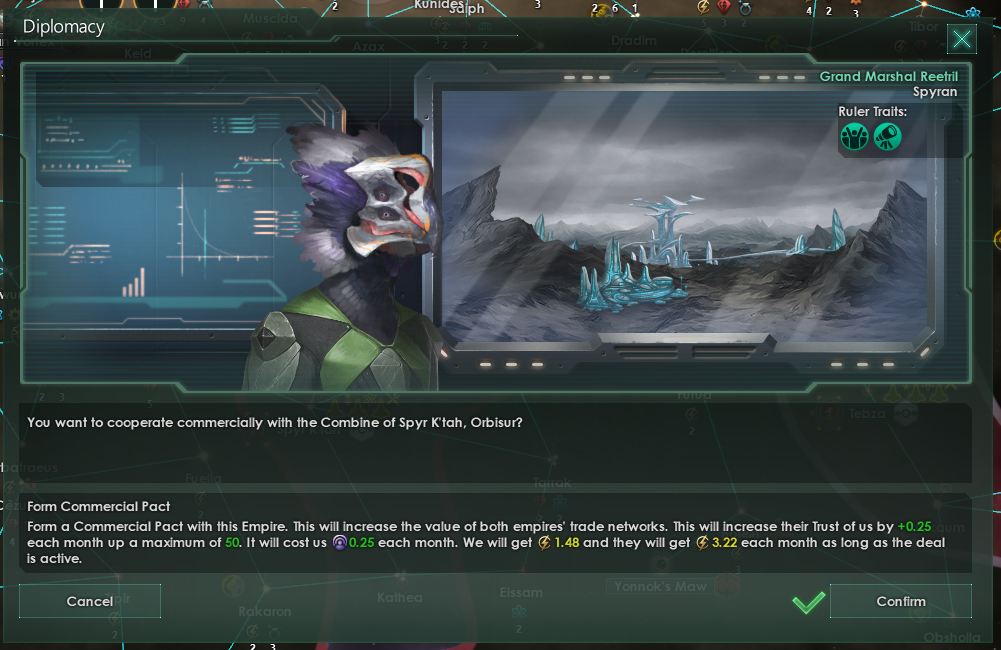
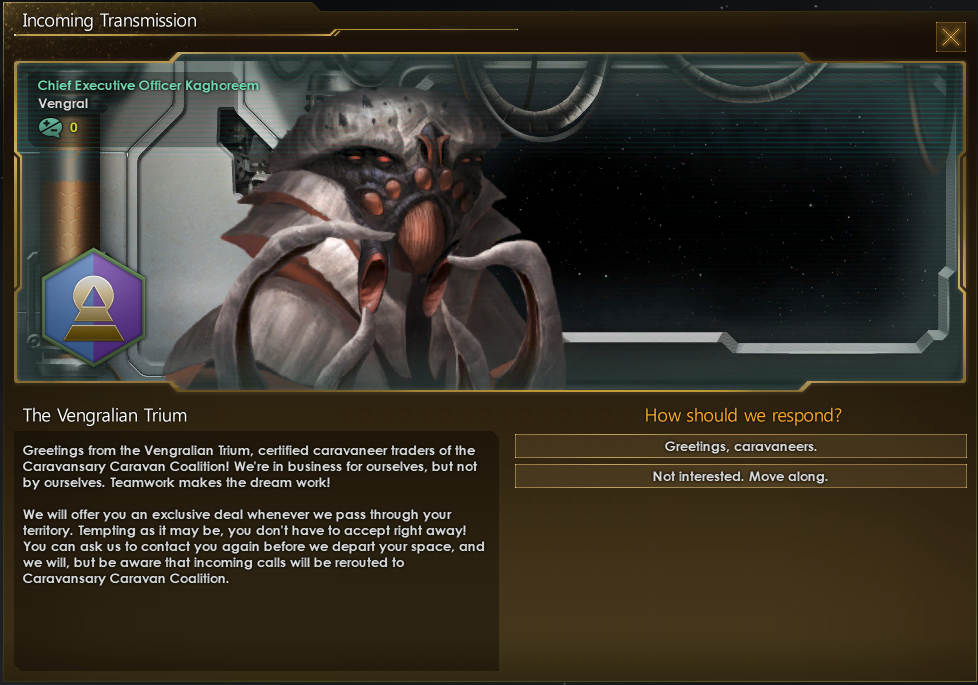
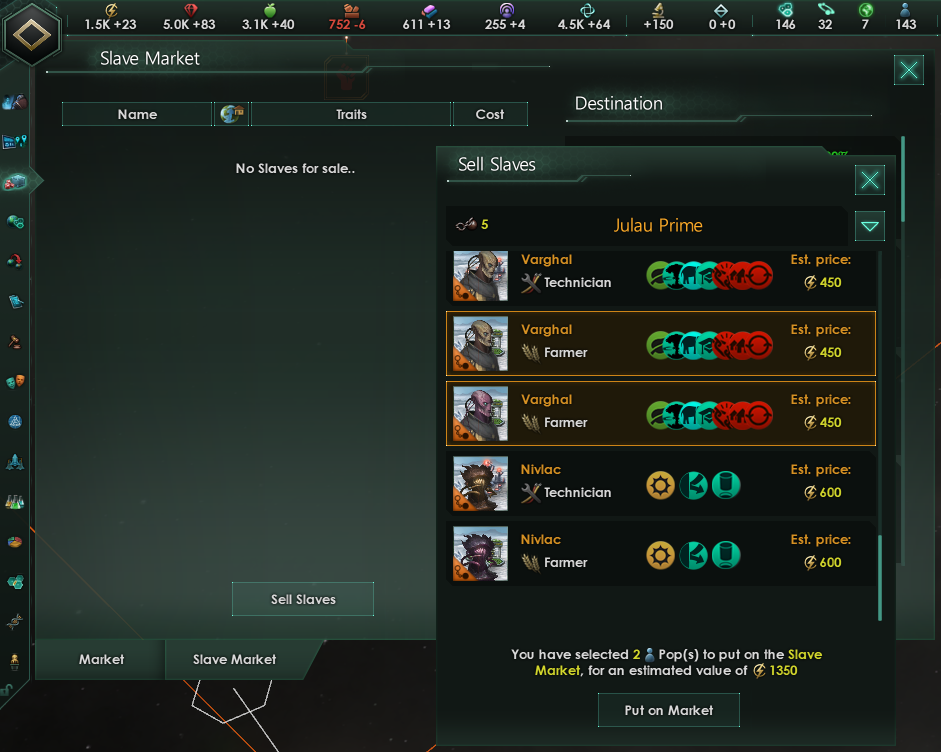
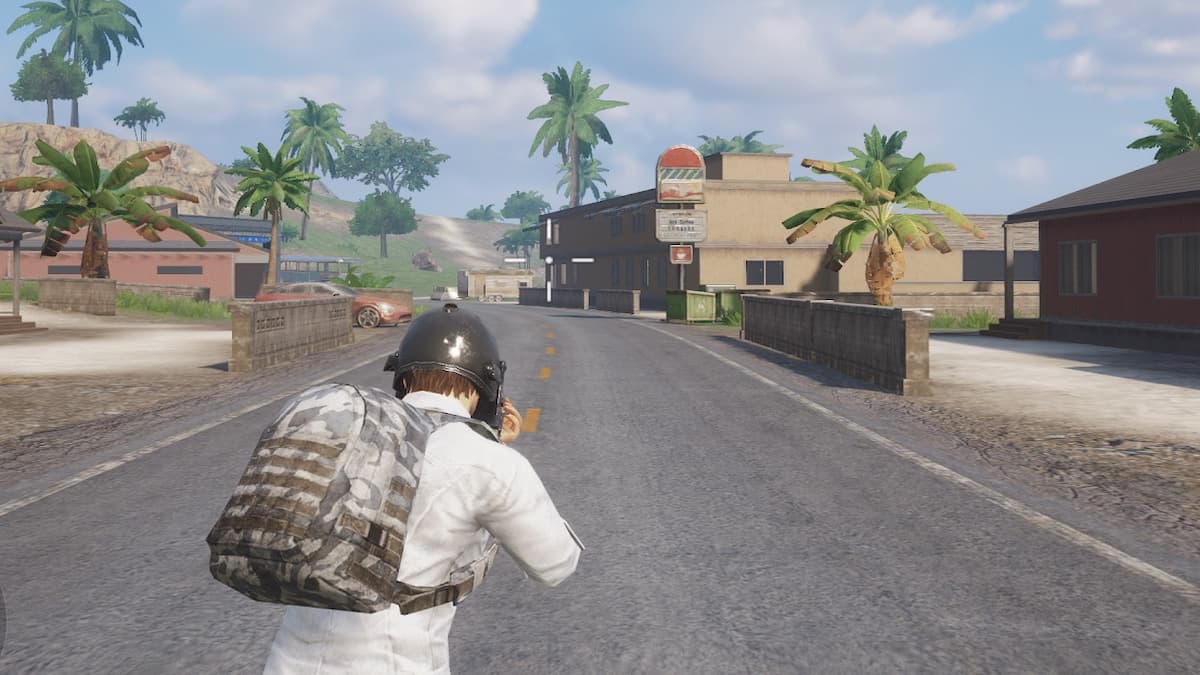




Published: Dec 8, 2018 07:39 pm